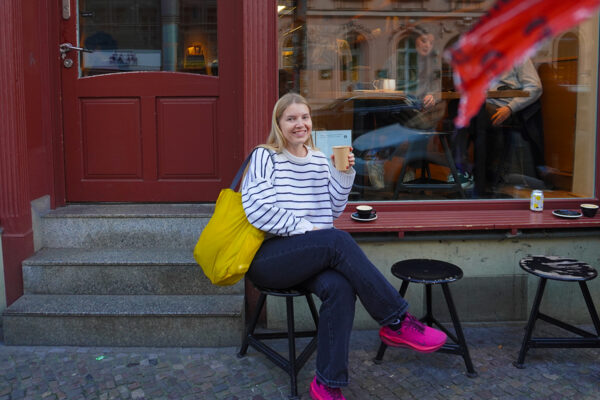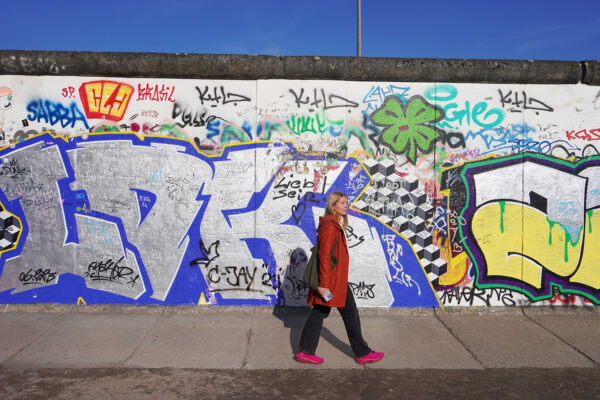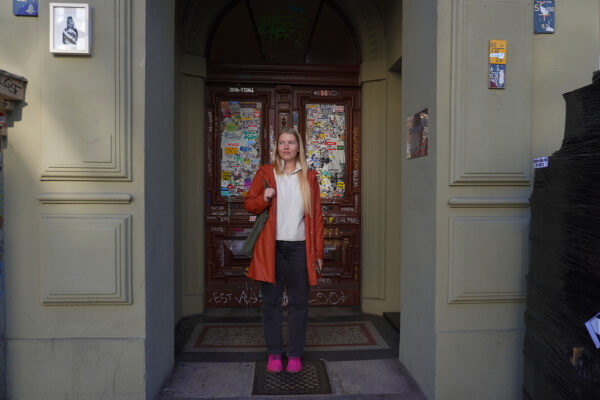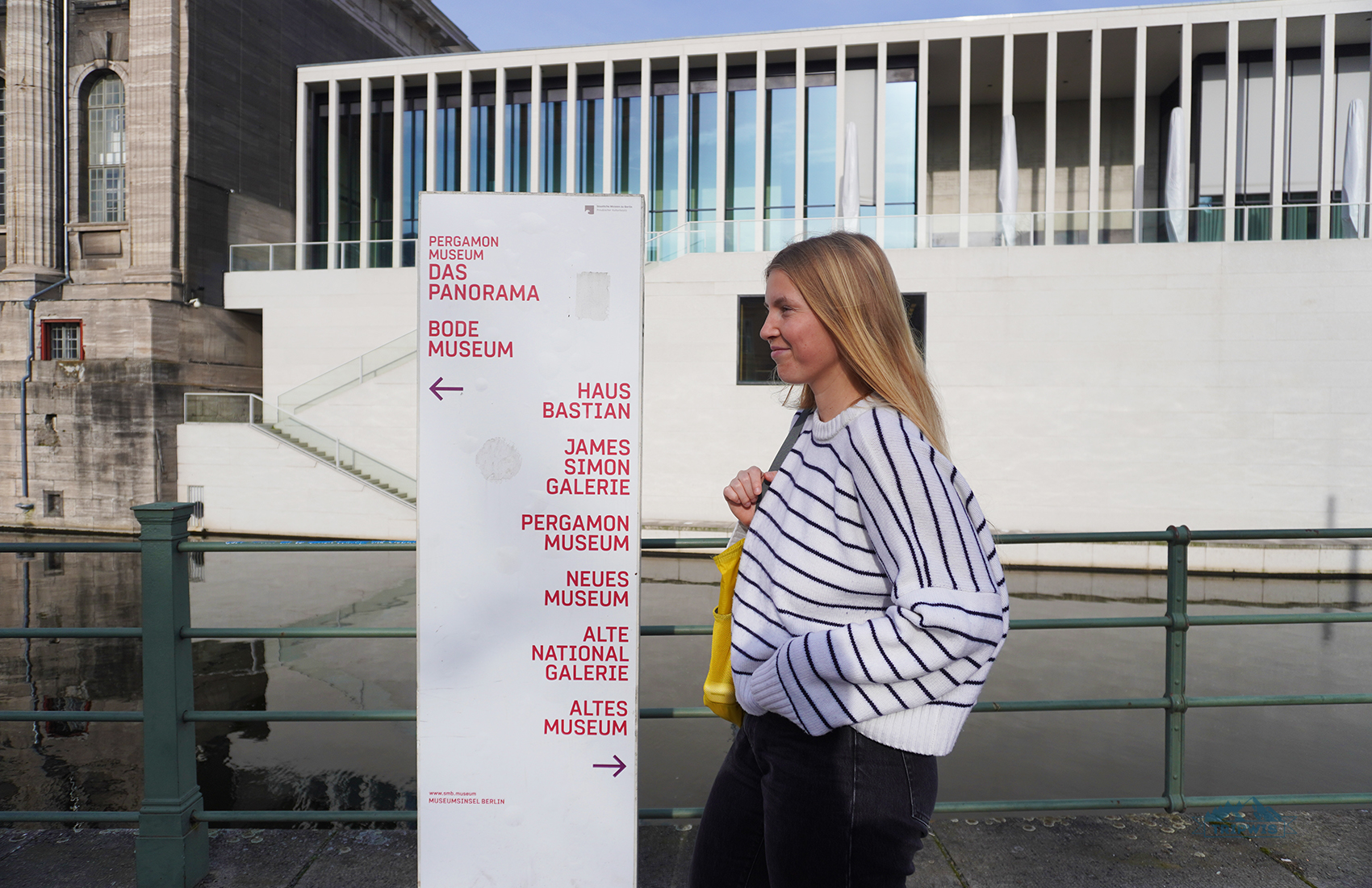
Berlin is definitely a city that has so much to offer to its visitors. At times we felt that it’s impossible to be able to see everything we wanted in the limited amount of time here. After all, many Berlin itineraries (ours included) are filled to the brim with things to do and see when in the city: It’s not a simple visit to the Reichstag Dome rooftop and that’s it for the day!
Despite all the craziness and tightness of schedules, we’ve always found an hour or two for visiting a couple of museums each time we’re in Berlin — even if that means rushing through the exhibition and spending no more than two minutes in front of each artifact or painting (so much for quiet contemplation, but you pick your battles). When you come across some of the city’s museums in must-see lists in travel guides about Berlin — do not underestimate their pull and importance. It’s true — they are as good as described.
Article contents
- Our 2 favorite museums in whole Berlin
- List of the popular museums in Berlin to visit
2.1. Museum Island
2.2. Hamburger Bahnhof
2.3. Bauhaus Museum
2.4. Museum of Photography
2.5. Museum of Natural History
2.6. German Museum of Technology
2.7. East Side Gallery
2.8. Urban Nation
2.9. DDR Museum
2.10. The Stasi Museum - Some new museums in Berlin
What are our favorite museums in Berlin?
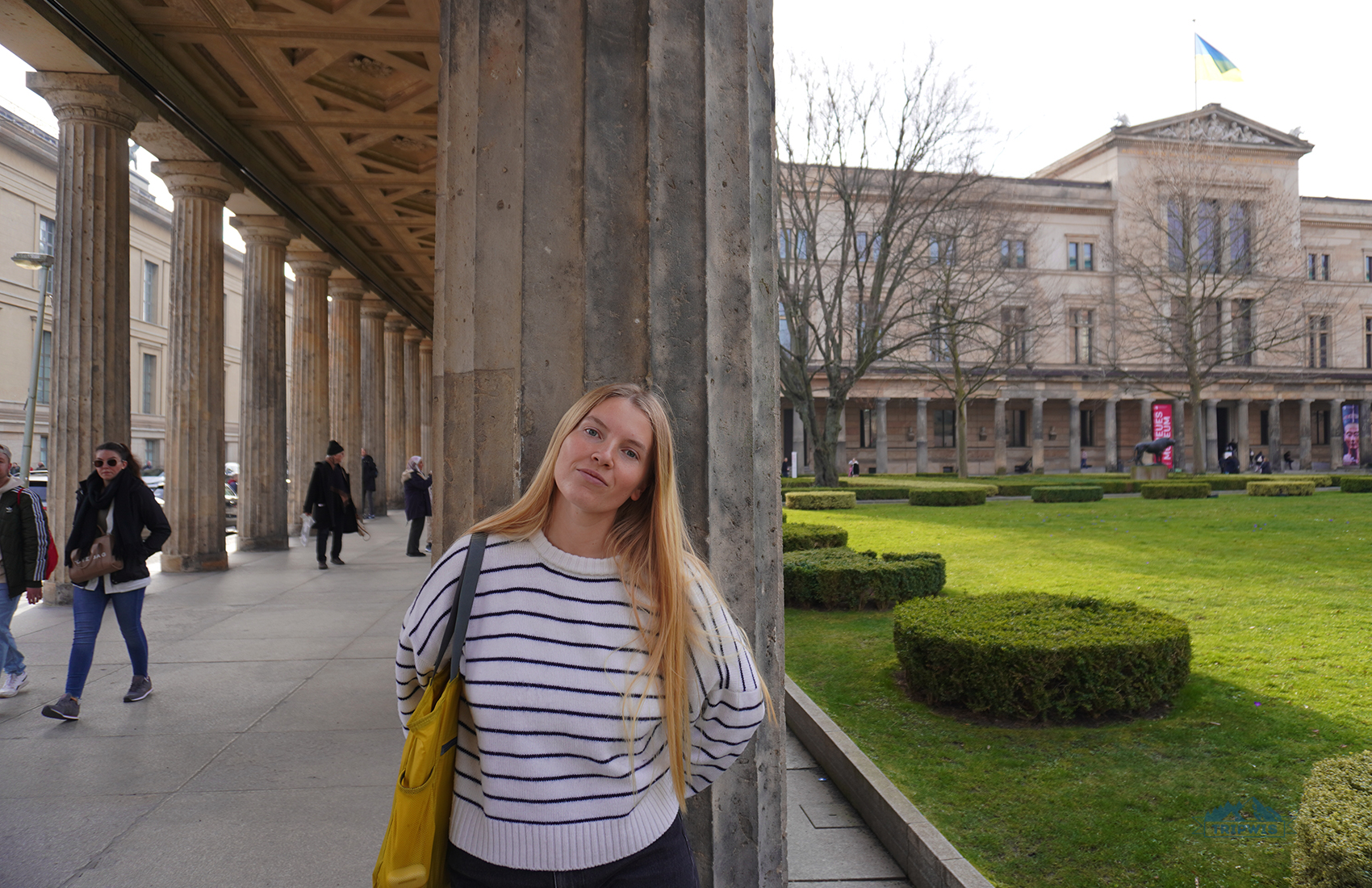
We may be biased, but we feel that the bigger chunk of Berlin’s many museums is one hundred percent worth visiting. With that being said, we cannot possibly start our exhaustive list of museums in Berlin without trying to sell you on the two of our very favorites (and that’s saying a lot, since museums usually aren’t the places we gravitate towards when in a new city):
- Deutsche Kinemathek — Museum of Film and Television
Being huge cinephiles ourselves, it’s safe to say that we’ve learned everything there is to know about Berlin from our very first Berlinale experience. This Berlin International Film Festival gave us plenty of opportunities to discover the underbelly of the city whenever we had to make our way from one festival venue to another or when we needed a break in-between film screenings.
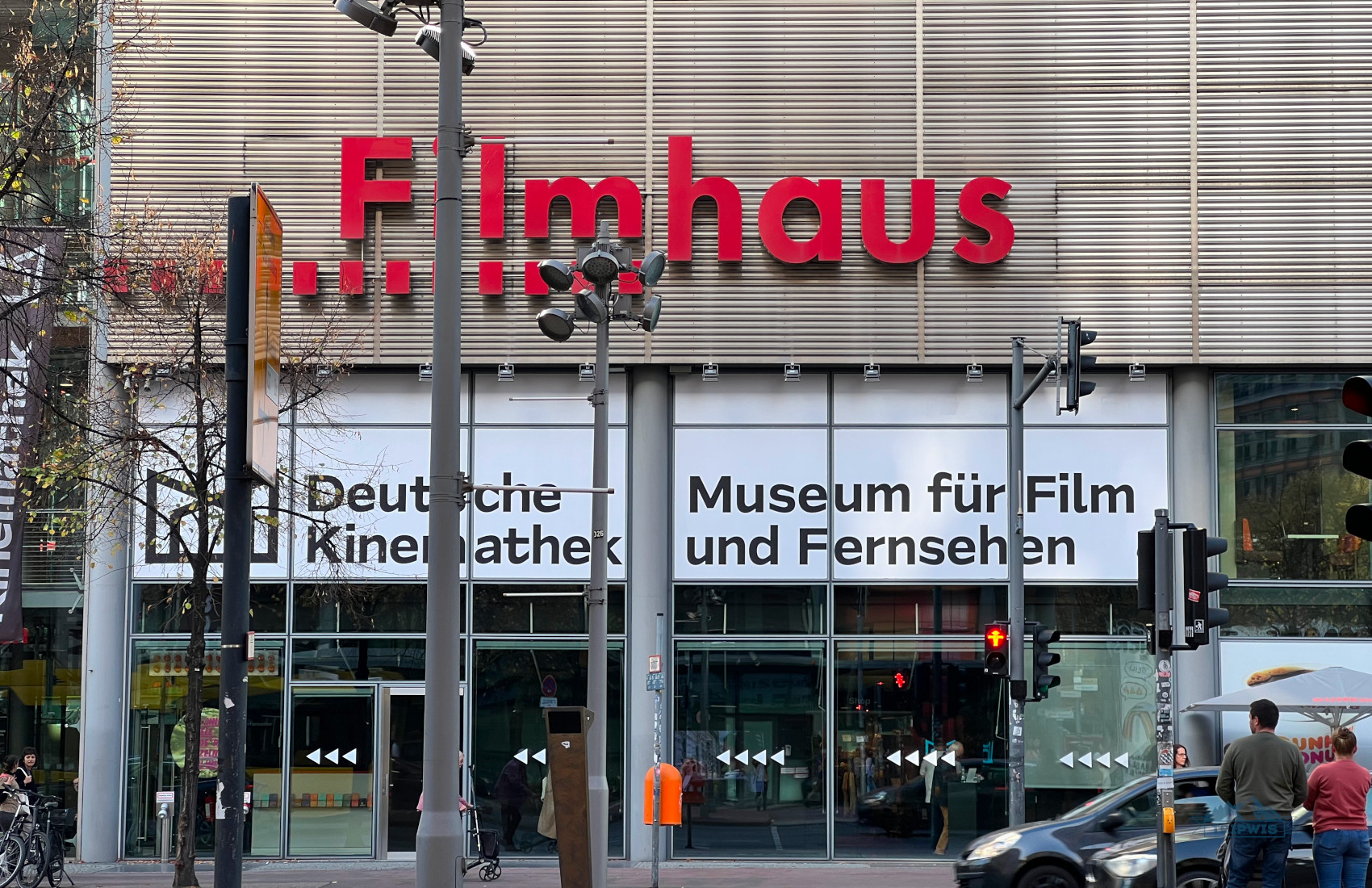
Because of that, it’s only natural that one of the first museums we visited in Berlin was the Museum of Film and Television, formerly located at the futuristic and high-tech Potsdamer Platz (it is now in a complicated process of a move north to the Mitte district, set to open its doors once again in fall of 2025). From the second we entered the exhibit, the space immediately made it to the list of our best Berlin museums to visit.
The museum has an impressive collection of film artifacts (think costumes, props, the whole shebang) for film nerds like ourselves, but it also makes your journey through film history engaging and exciting. You’ll get to try on the role of a spy and look into secret film documents of Hitler’s era; walk in the shoes of film pioneers and take mind-blowing pictures in the Hall of Mirrors — an infinite mirror corridor that takes you through most of the relevant cinema history moments. I’m pretty sure that you and your kids would find this experience similar to what a good movie should do to you — educate and entertain at the same time.
With a film archive that spans thousands of movie titles, it’s pretty clear that the museum will cater to your interests, no matter the niche! You can be a huge Marvel fanatic or a diehard Marlene Dietrich stan, — Museum of Film and Television will have some unique insight into the cinematic universe of your choosing.
💶Entrance fee: Adult — €9, students — €5, children free.
🕔Opening hours: Museum of Film and Television is closed on Mondays and Tuesdays; open Wed – Sun: 10 a.m. – 6 p.m. All the exhibits and archives are currently unavailable for a vist, with a grand re-opening scheduled for fall 2025!
- Jewish Museum
 |
 |
Another museum that is impossible to keep off the list of our favorite spots in Berlin is the Jewish Museum. Let’s get this out there right away: It’s a very serious space, created specifically for quiet learning and contemplation. Prepare for an emotional rollercoaster of a journey whenever you plan your visit.
The main exhibition walks you through the part of the German past the nation is not proud of; but the way this past is reflected upon is profoundly meaningful. Starting from the building itself (the zigzagging structure that draws your attention the second you witness it), and together with some of the installations (large or small, — all heavy with emotion and history behind them) — the museum provides you with a thoughtful experience that will first break your heart and then put all the pieces back together.
Temporary exhibits at Jewish Museum aren’t free* (unlike the children’s museum and the main exhibit): The adult ticket will cost you €10, with children under 18 entering for free.
Speaking of, if you’re coming to Berlin with a little one, make sure to check out Anoha — the Children’s World of the Jewish Museum Berlin. Here, important questions of nature, diversity, and God are brought up in an interactive and playful manner, perfect for developing curious minds.
💶Entrance fee: Admission to the temporary exhibits is €10, with children under 18 entering for free; general admission to the Jewish Museum is always free.
🕔Opening hours: Jewish Museum is open daily 10 a.m. – 6 p.m.
Best museums in Berlin to visit
Berlin has around 170 museums scattered throughout the city, so the list provided to you below is a compilation of the ones we’ve found most worthy of visiting. Our own personal experiences vary from museum to museum — some we’ve visited only once, while others are the destinations we come back to again and again with each trip we take to Berlin.
Personal flair and a unique lens of experiences is what usually excites us when reading listicles on travel destinations. So, we hope you will appreciate our very subjective list of the best museums to visit in Berlin.
There are a couple of important things to keep in mind when planning your cultural exploration of Berlin:
- If you’ve been planning to use the famed “Museums Sunday” during your next trip to Berlin, you will sadly be dissapointed! The program (that encouraged people to visit museums by having the admission be free on the first Sunday of each month) has now been suspended due to funding cuts. It was a spectacular idea and we are bummed to see it go! Maybe one day the opportunity will come back — we will keep you posted!
- While it is possible to buy your ticket on-site, we still recommend you use GetYourGuide for online bookings beforehand — it’s an official reseller of the tickets to all kinds of Berlin’s museums.
- The National Museums are closed on Mondays! Plus, since April 2024, a few of the smaller-scale museums have started to have Tuesdays off too. The opening hours vary a little from museum to museum, so make sure to consult their official websites before coming.
Museum Island

Why come here? This place is always the first thing that comes to mind when someone mentions Berlin’s best museums. And for a very good reason.
Museum Island in Berlin is a museum complex in the heart of the city that is included in UNESCO World Heritage. It breathes history — ancient antiquities share the acres with Impressionist paintings, Renaissance sculptures, and prehistoric objects.
There are five museums on this island, so be ready to completely lose track of time here and get overwhelmed by the most peculiar artifacts of German culture. If you get a combo ticket for all of the museums on the island, keep in mind that you’ll need AT LEAST three hours just to hit the most important exhibits across the grounds. Come here caffeinated and ready to rumble, as the museums offer plenty of curiosities to keep you enthralled for quite a long time!
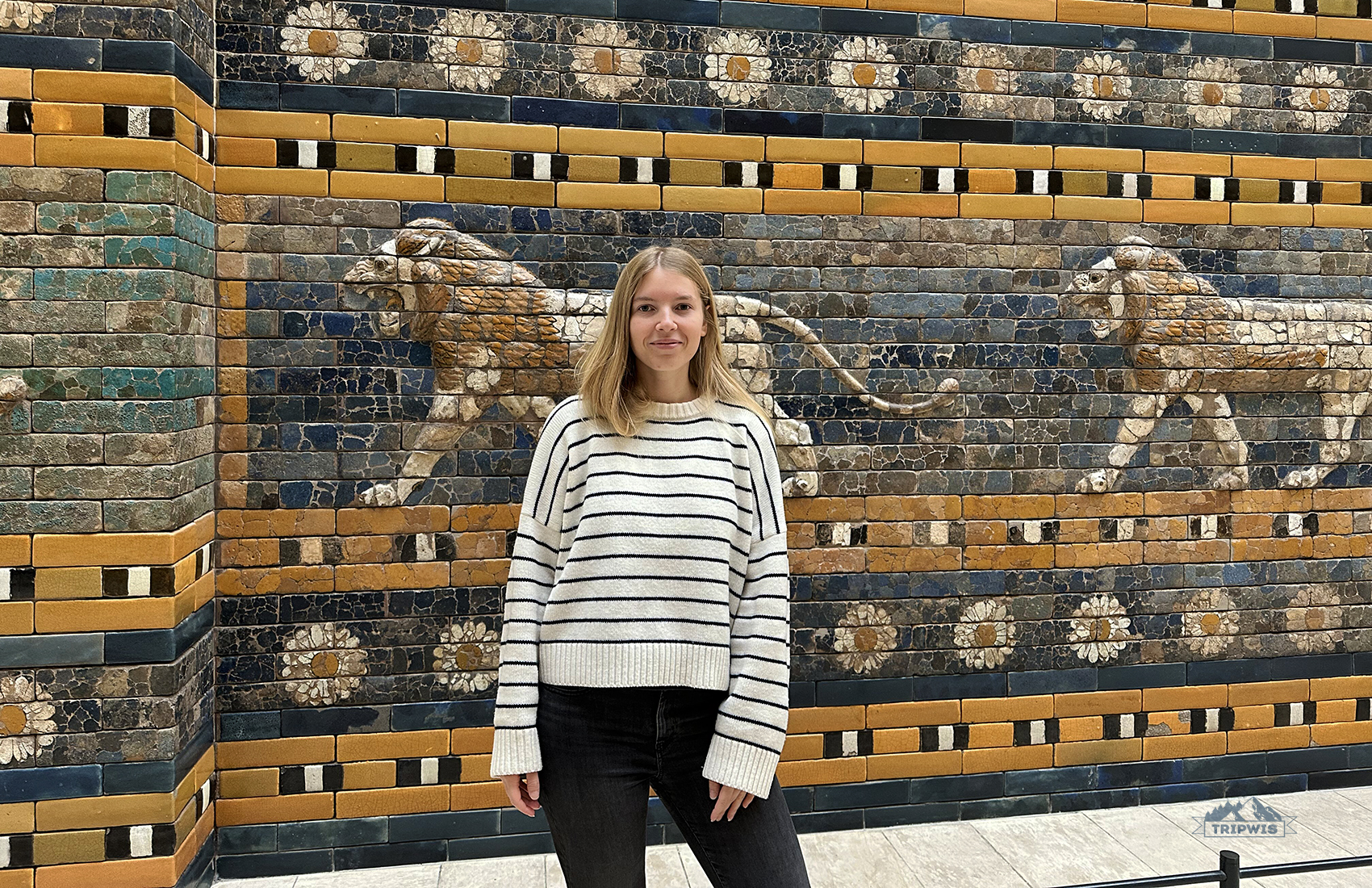
1. The Pergamon Museum is famous for its full-scale reconstruction of Greek and Roman monuments. If you’re into ancient civilizations and archaeological discoveries excite you, then this place will blow your mind. IMPORTANT NOTE — the Pergamon museum is closed for renovation until 2027. Though you won’t be able to enjoy the main exhibition of the Pergamon for quite some time, you can still marvel at The Panorama — a huge panoramic installation that shows what it would’ve been like to find yourself in the ancient city of Pergamon.
💶Entrance fee: Adult ticket to The Panorama costs €14, students can enter for €7, children visit for free.
🕔Opening hours: The Panorama is closed on Mondays; open Tue – Sun: 10 a.m. – 6 p.m.

2. The Bode Museum is mostly known for its collection of objects from the Byzantine Empire; but personally, we come here to stare at sculptures from the early Renaissance and Baroque periods. The sculpture collection is not packed with big names, but that won’t prevent you from feeling mesmerized by the beauty.
💶Entrance fee: Adults — €12, students — €6, children free.
🕔Opening hours: Bode Museum is closed on Mondays and Tuesdays; open Wed – Fri: 10 a.m. – 5 p.m., Sat, Sun: 10 a.m. – 6 p.m.

3. The National Gallery is home to 19th-century paintings and French Impressionism. If you’re like us — in love with Impressionism even though it’s considered too mainstream — you will be completely enamored by this place. The whole second floor of the Gallery is dedicated to the paintings by Monet, Manet, Renoir, and others.
💶Entrance fee: Adults — €12, students — €6, children free.
🕔Opening hours: The National Gallery is closed on Mondays; open Tue – Sun: 10 a.m. – 6 p.m.

4. The Neues Museum (New Museum) features the papyrus collection and other treasures of the early history of humans including the one and only Nefertiti Bust. It was fun to walk around this place and peeking at the mummies, and it’s definitely on our list of regular spots!
💶Entrance fee: Adult — €14, students — €7, children free.
🕔Opening hours: Neues Museum is closed on Mondays; open Tue – Sun: 10 a.m. – 6 p.m.

5. The Altes Museum is dedicated to Classical Antiquities and I’ve heard people being pleasantly surprised by its coin and jewelry collection. If you consider yourself to be into that (to tell you the truth, we’re no numismatists ourselves) — you are in for a treat. If you’re more of a painting and sculpture kind of person, then you can skip this place and dedicate another hour or two to the Bode Museum and the National Gallery.
💶Entrance fee: Adults — €12, students — €6, children free.
🕔Opening hours: Altes Museum is closed on Mondays and Tuesdays; open Wed – Fri: 10 a.m. – 5 p.m., Sat, Sun: 10 a.m. – 6 p.m.
Museum Island must-see exhibits, across the different museums:
- The Pergamon Altar — this most visited item in the whole complex is a relief of the Olympian gods fighting the Giants. Understandably, it’s located at the Pergamon, so you can’t see it at the moment, but the anticipation of looking at it again some time in the future is almost electric!

- The Nefertiti Bust — another notable object is located in the Neues Museum. You’ve probably heard about this bust or even seen it on TV, so it would be nice to put a face to the name (literally).
- The Thinker by Rodin — my personal favorite because I adore Rodin and his work. But even if you’re not, you might want to check this off your bucket list and take a selfie with one of Rodin’s Thinkers. The National Gallery makes this dream real for many people!
Hamburger Bahnhof

Why come here? Hamburger Bahnhof has an outstanding collection of contemporary art pieces. I’m not even afraid to say that this is the Berlin version of MoMA!
The curatorial staff here likes to focus on interdisciplinary — Cy Twombly’s paintings and Andy Warhol’s prints neighbor Rauschenberg’s collages, as well as Joseph Beuys’ scandalous installations and video-art pieces. And it gets even crazier from here! The best way to enjoy Hamburger Bahnhof’s many faces is to come here with an open mind — in this case, a journey through the looking glass is guaranteed.
Must-see exhibits:
- Double Elvis by Andy Warhol — to tell you the truth, I hadn’t understood the world’s obsession with Warhol until I got to see his prints in person. This is a really transformative experience that I think everyone should have at least once in their lifetime.
- Any of Joseph Beuys grandiose sculptures — this German artist was a genius of social art. His works were always provocative and very easy to grasp. The museum doesn’t exhibit the same thing all the time, but if you get a chance to see something of his on display — don’t miss it.
- Current exhibitions — since it’s a museum of contemporary art, there is always something right around the corner. The latest addition of Mark Bradford: Keep Walking installation that explores topics of race, gender, and economic inequality is a treat you didn’t realize you absolutely must have as part of the greater Hamburger Bahnhof picture. Keep an eye on their announcements!
💶Entrance fee: Adult — €14, students — €7, children free.
🕔Opening hours: Hamburger Bahnhof is closed on Mondays; open Tue – Fri: 10 a.m. – 6 p.m., with the exception of Thursdays — the museum closes at 8 p.m.
Bauhaus Museum
Why come here? We all appreciate cozy and functional furniture in our houses, but we rarely think about how it came into existence. Well, this is your chance to learn something about the industry!
Bauhaus was an art school that tried to unify aesthetics with function and to change the mass production market. The collection of this Berlin museum covers all the aspects of that movement — from architecture to textiles.
Must-see exhibits:
- Wassily steel chair by Marcel Breuer — this is probably one of the most well-known Bauhaus objects that revolutionized the furniture market. Come and pay your respects to the prototype of the Scandinavian style that is so in vogue right now.
- Kandinsky mural paintings — if you’ve heard about the painter Wassily Kandinsky before, these items might shock you because they are nothing like his other abstract works. The murals are all about strict and straight lines — staring at such geometry is a very soothing experience.
Side note: The actual Bauhaus Museum is currently closed for renovation (has been since 2018, so you can imagine the scope of reimagining that is taking place here). For now, you can still learn more about Bauhaus by visiting the temporary Bauhaus Archive in Charlottenburg (they also have a Bauhaus shop over there, for all of your shopping extravaganzas).
💶Entrance fee: Free admission for Bauhaus Archive.
🕔Opening hours: Bauhaus Archive is closed on Sundays; open Mon – Sat: 10 a.m. – 6 p.m.
Museum of Photography
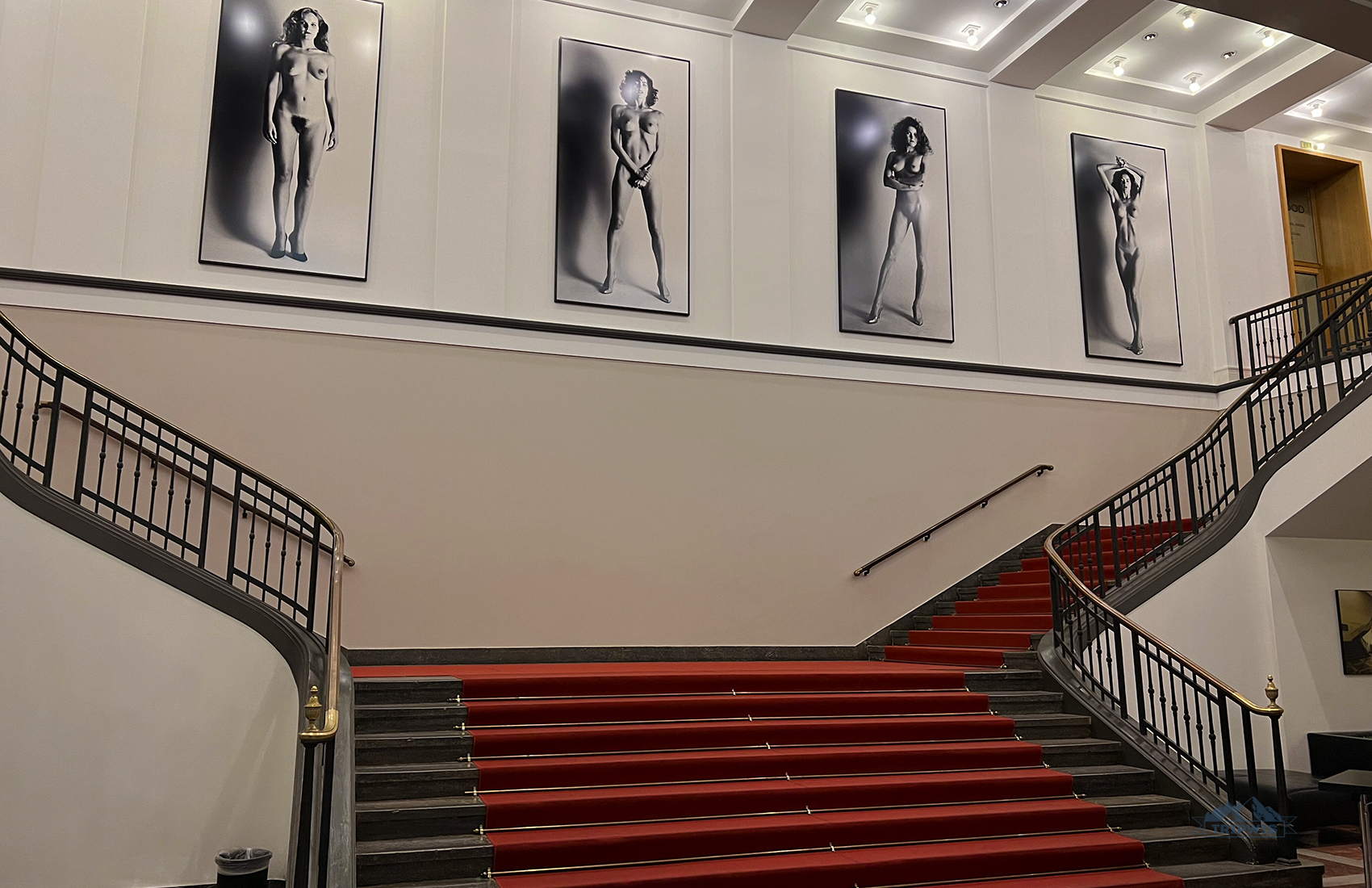
Why come here? Berlin’s Museum of Photography always manages to exceed our expectations. Their art collections change quite often, which is always a treat: We love to come back here every time we’re in Berlin, and every visit is an entirely different beast!
There is also a permanent exhibition here dedicated to Helmut Newton, a German photographer whose photos quite often appeared in Vogue and influenced fashion photography in general. Keep in mind that the exhibitions are not always kid-friendly!
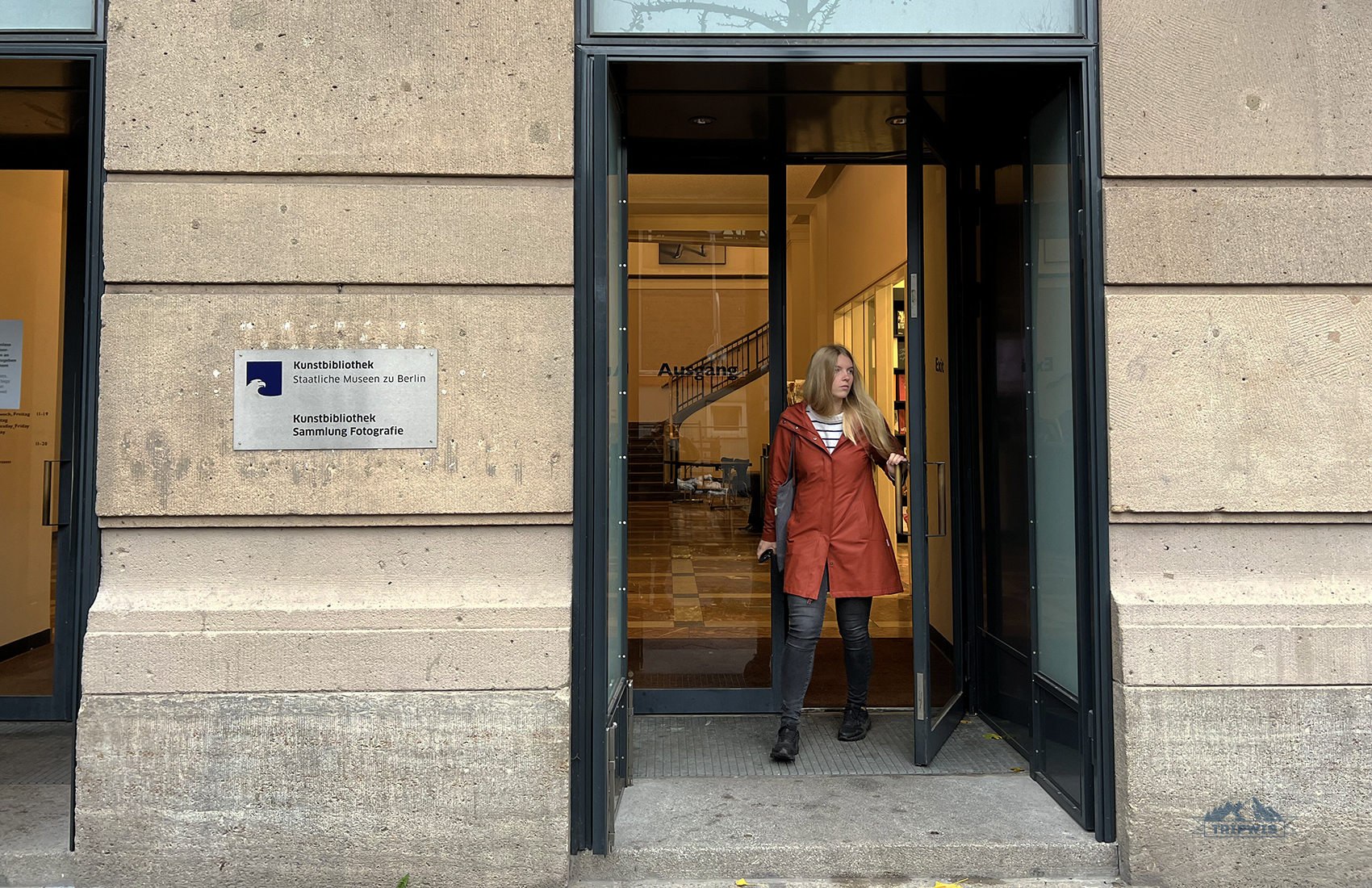
Must-see exhibits:
- Helmut Newton’s Private Property — the only permanent exhibition at the museum, this is a no-brainer: What can be better that witnessing the behind-the-scenes of the mind of arguably the world’s most accomplished photographer?
- As we’ve mentioned before, the museum’s roster of exhibits is full and fast paced. At the time of writing, the two current exhibits are the Polaroid works of Helmut Newton and a bunch of other iconic photographers (Maurizio Galimberti, Luigi Ghirri, and Sally Mann, to name a few) and the installation Surrender to the Dreamers that focuses on transcendental power of photography as a medium. Make sure to follow the museum’s calendar of events online, so that you have your finger on the pulse of all things photography. Or, you know, be pleasantly surprised upon visiting, — whatever works for you!
💶Entrance fee: Adult — €12, students — €6, children free.
🕔Opening hours: Museum of Photography is closed on Mondays; open Tue – Sun: 11 a.m. – 7 p.m., with the exception of Thursdays — the museum closes at 8 p.m.
Museum of Natural History

Why come here? I, among many others, became a fan of Natural History museums after the Night at the Museum movie! But after visiting the Museum of Natural History in Berlin I’ve realized that the real experience is even more fun — Owen Wilson’s “WOW”-worthy, even!
Berlin’s Museum of Natural History has pretty much all the coolest-looking curiosities from the world we call our home — from giant paper maché insects to animal models and reconstructions (that of the Dodo bird is pretty exciting), from shimmering minerals to dusty meteorites.
Must-see exhibits:
- The World of Dinosaurs — you can’t miss it and you shouldn’t miss it. Berlin Natural History Museum is famous for displaying the tallest mounted dinosaur skeleton (whose nickname is Oskar, by the way).
- The Cosmos and the Solar System room will revive your childhood dreams of space travel. There is a multimedia show about the Bing Bang Theory and the Solar System. After that, you can walk around and look at real meteorites.
- The Wet Collection Wing — if you want to feel like an evil scientist, don’t forget to browse around the museum’s many specimens preserved in jars. A gnarly sight to some offers a unique glimpse into countless of animal groups otherwise not easily available for examination.
💶Entrance fee: Adult — €11, students — €5, children free.
🕔Opening hours: Museum of Natural History is closed on Mondays; open Tue – Fri: 9:30 a.m. – 6 p.m; Sat, Sun: 10 a.m. – 6 p.m.
German Museum of Technology

Why come here? If you’re on a family vacation and your kids prefer a more hands-on approach to learning, this place should be on your list of places to visit in Berlin. German Museum of Technology is one of those unusual museums with hundreds of interactive activities catered to every age.
Here, you will get to see the world’s first computer and vintage locomotives; learn the fundamentals of science and discover how to exploit sugar for producing energy.
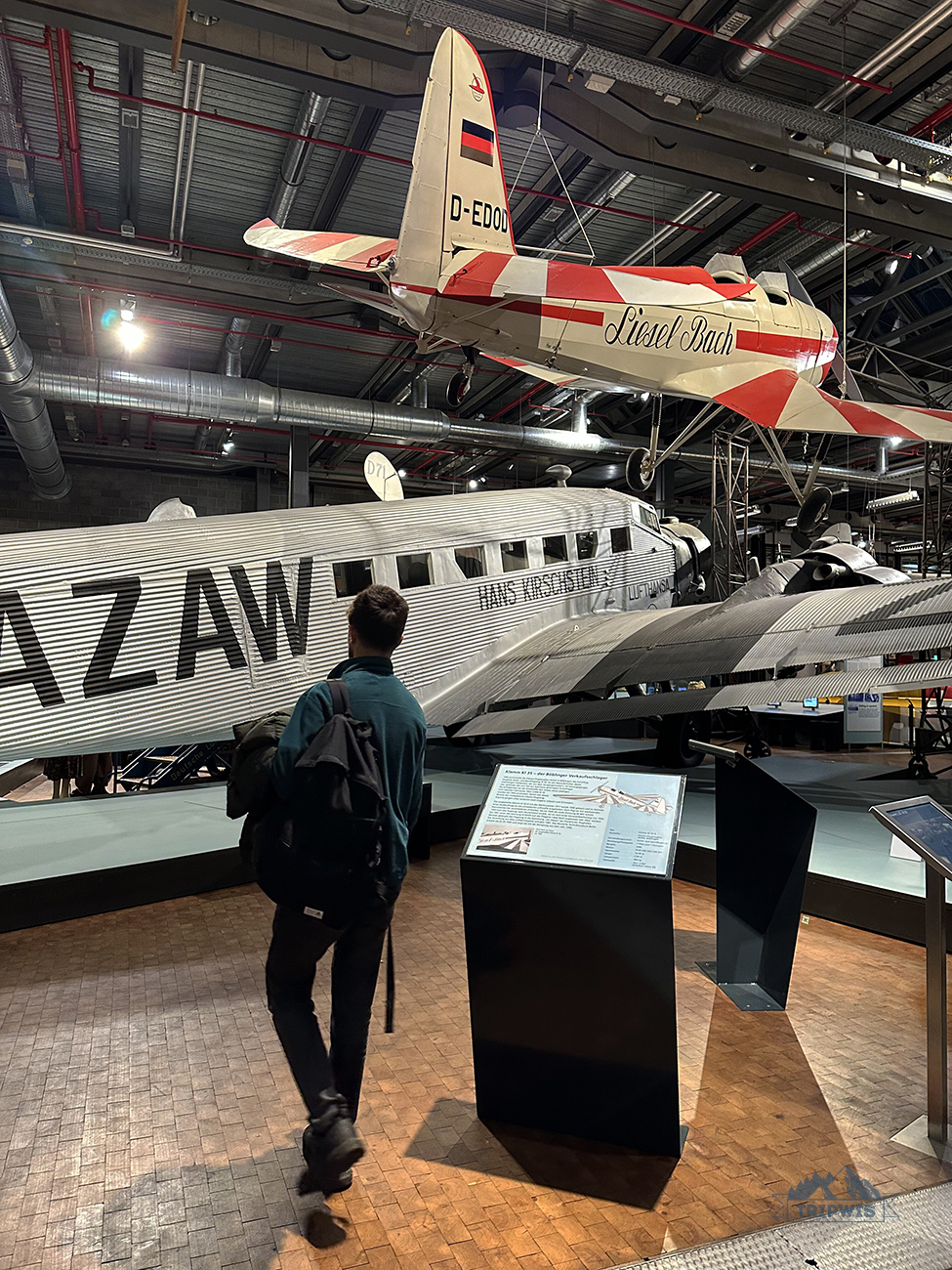 |
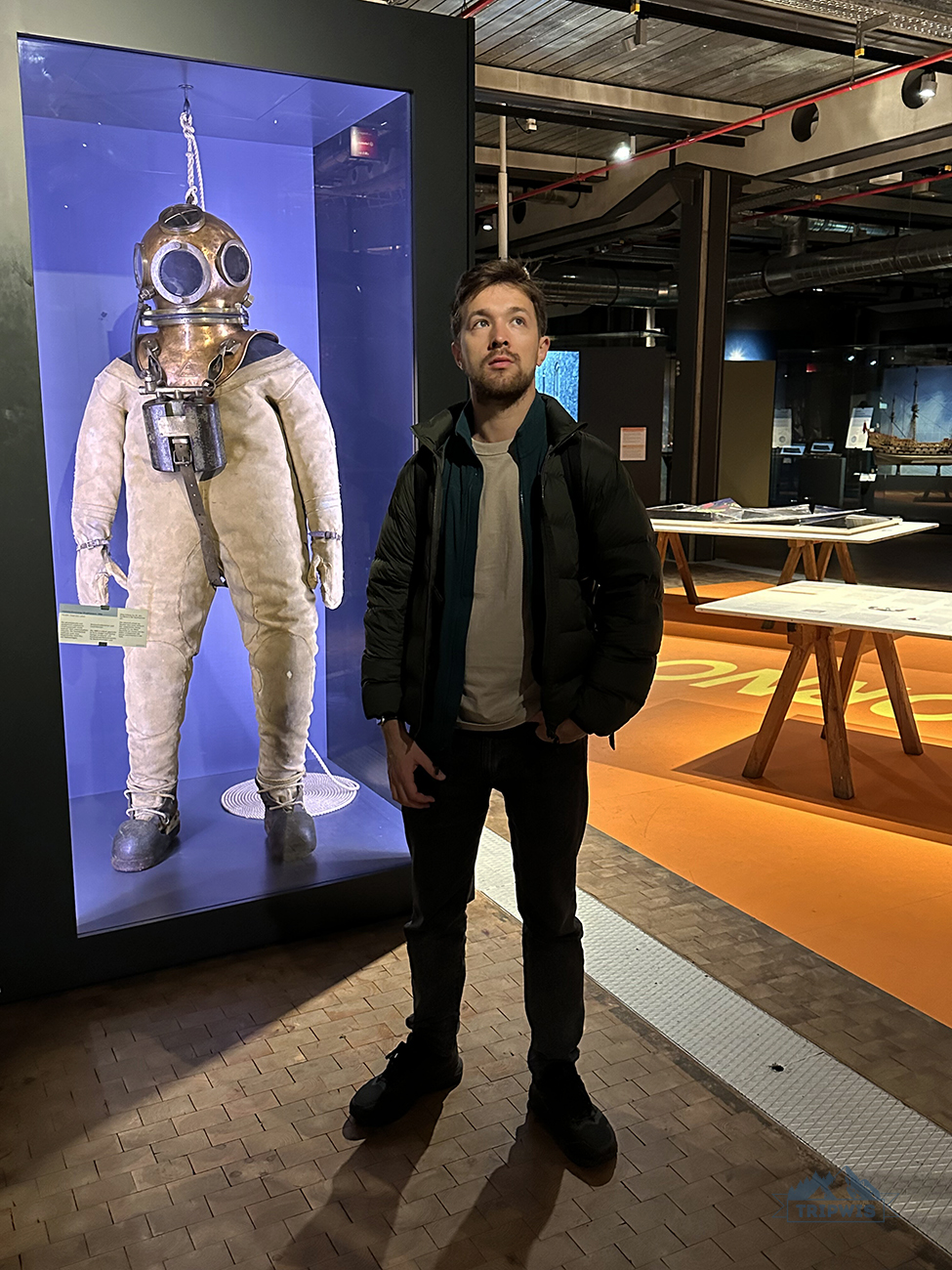 |
Must-see exhibits:
- Historical Brewery — after all, German culture is beer culture, so not learning about the way it gets made is considered a crime here (jk!). This exhibition will give you a nice overview of the process, with deeper insights into proper technology and closer look at the machines used (that bottle filler is no joke!). Cool hipster photos are guaranteed — just the right amount to impress your IPA-drinking friends back home!
- Papermaking — I’ve always been fascinated with books, so it’s no wonder I have this particular exhibition on our list. Ah, the exciting process of turning pulp into actual sheets of paper; it’s captivating to say the least! Even though we live in a predominantly digital age, the technologies shown here strike a certain cord with visitors, leaving you more appreciative of the efforts made to safeguard this sacred tradition of making paper by hand.
- Rail Transport — this exhibit will have your little ones entertained for hours! I don’t know what it is with toddlers and trains, but they’re a match made in heaven. Adults will have a great time here too — museum’s unique collection of old locomotives and streetcars is pretty spectacular!
💶Entrance fee: Adult — €12, students — €6, children free. However, we popped into the museum an hour before closing, and they let us in for free!
🕔Opening hours: German Museum of Technology is closed on Mondays; open Tue – Fri: 9 a.m. – 5:30 p.m; Sat, Sun: 10 a.m. – 6 p.m.
East Side Gallery
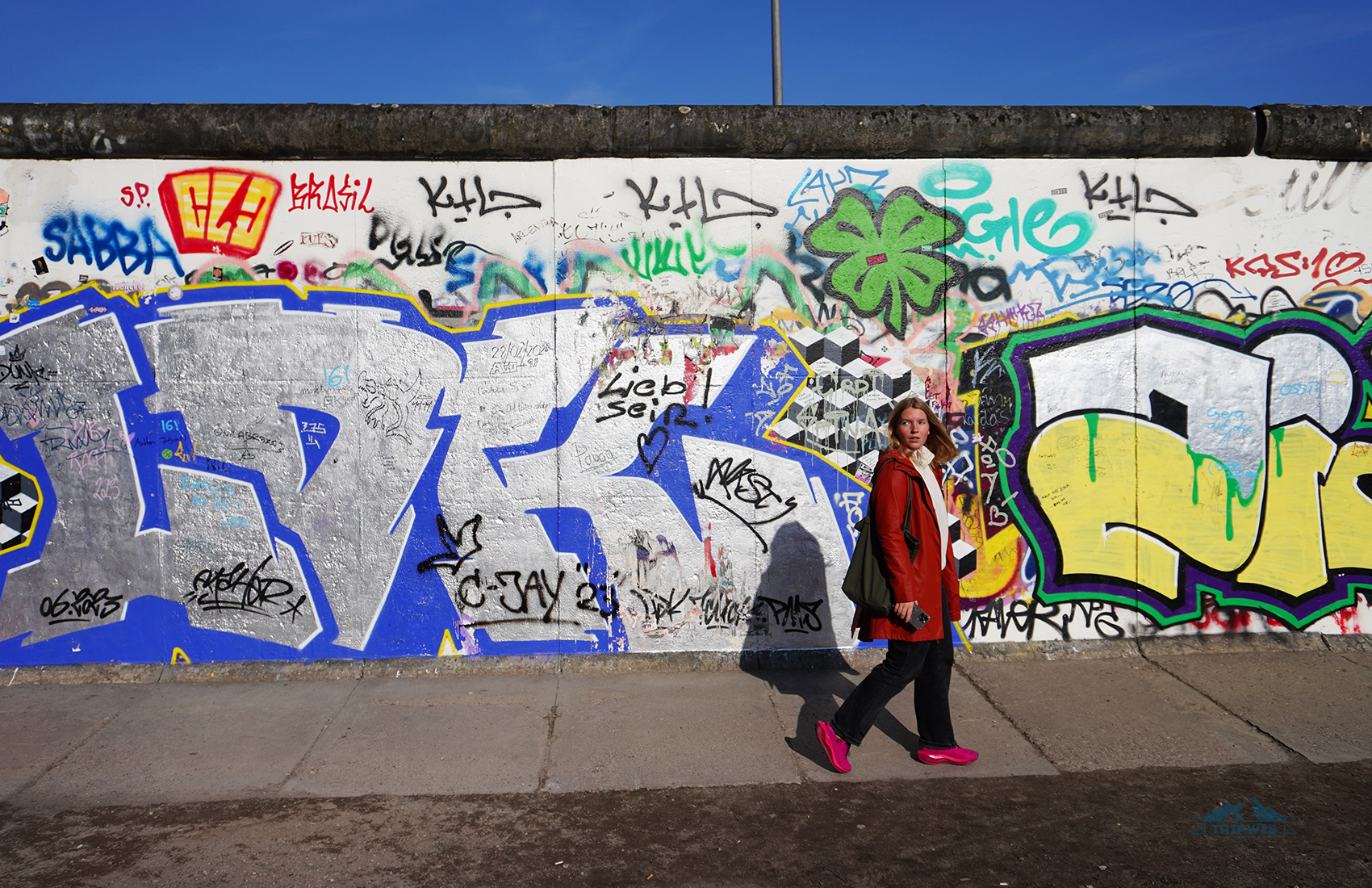
Why come here? East Side Gallery always tops the lists of best things to do in Kreuzberg neighborhood of Berlin, and with good reason: It is the quintessential part of understanding Berlin’s free spirit.
After the fall of the Berlin Wall, many artists felt the urge to turn the ruins of it into art. So, the Wall became not just an important historical monument, but a canvas for street artists. That was the beginning of the East Side Gallery. Now there are miles of colorful graffiti that stay preserved for us to enjoy. There is a nice bonus — the Gallery is one of the free museums in Berlin and it’s open 24/7.
Must-see exhibits:
- Fraternal Kiss — formally named as My God, Help Me to Survive This Deadly Love, this iconic graffiti by Dmitri Vrubel features the kiss of Soviet leader Leonid Brezhnev and East German leader Erich Honecker. This is probably one of the most photographed spots in Berlin.
- The Trabant breaking through the wall — another famed graffiti at the East Side Gallery, this one painted by Birgit Kinder. It shows a Trabant (a small car) breaking through the wall (hence the name), which pays tribute to all East Germans who tried to escape over the Wall.
Urban Nation
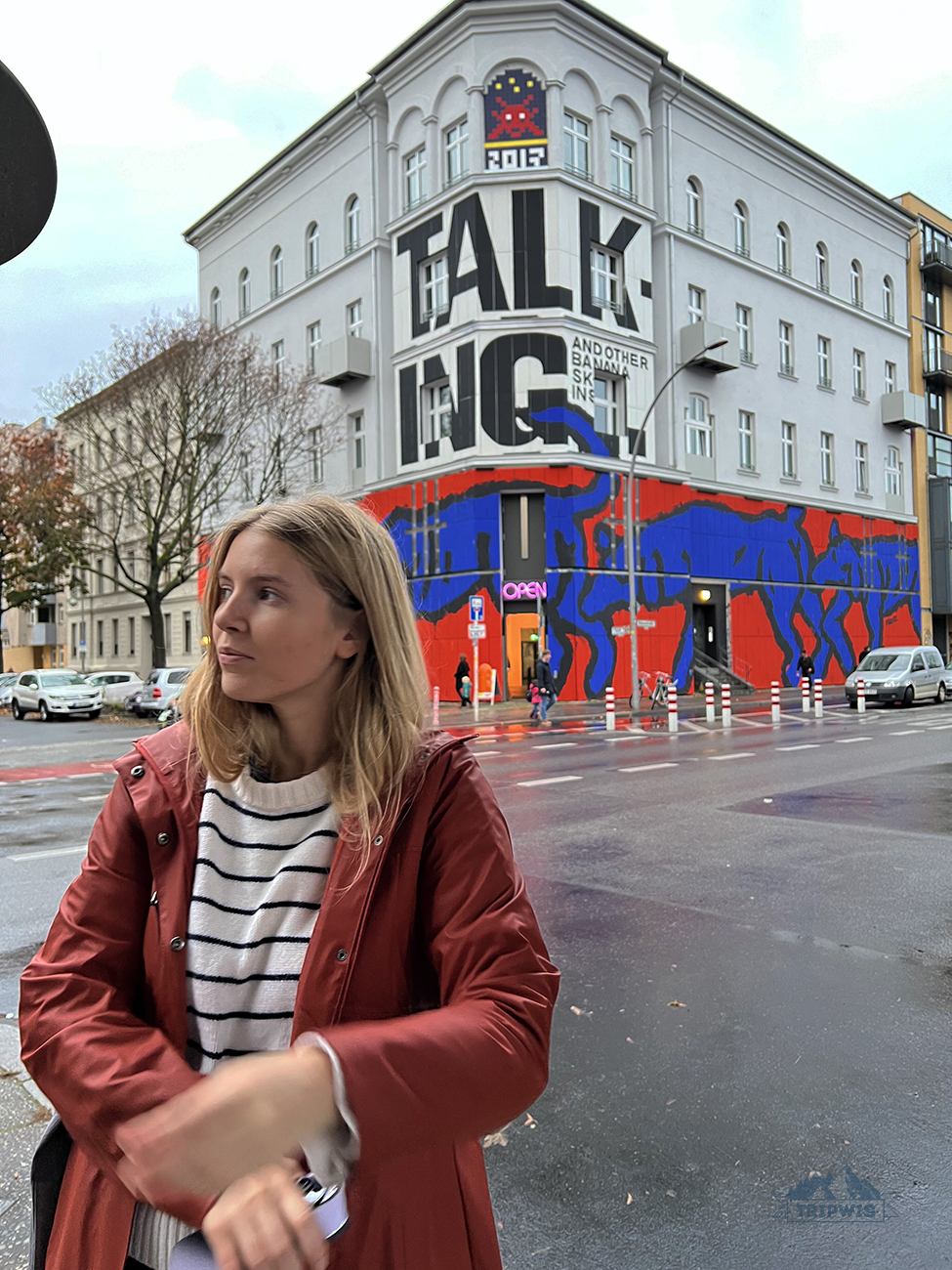 |
 |
Why come here? Urban Nation is another Berlin museum where you can dive into the world of street contemporary art. This place opened up not that long ago — in 2017 — and every show they hosted since then has been a huge success.
Street photography, plastic art, found objects, and graffiti — you name it, the museum has already had that in its shows. Planning a visit here, keep in mind that the world of contemporary art is changing very quickly, so whatever is exhibited at the museum is only there for a short time.
Must-see exhibits:
- Urban Nation doesn’t have its own permanent art collection, which means that every show is unique and specifically created according to the theme. Such an approach is really exciting — every time you come here you know that the art around you is completely fresh and up-to-date. To check what’s on — visit the museum’s website. The current exhibition called LOVE LETTERS TO THE CITY sounds like the one for the books! It runs until May 2027, so you have plenty of time to check it out!
- Another precious thing that this museum has is a map of works created by street artists. The murals and other urban objects are located in different parts of Berlin and are open to the public all the time. Spotting all of the works featured on the map might be a great way to discover the city.
💶Entrance fee: Free admission.
🕔Opening hours: Urban Nation is closed on Mondays; open Tue, Wed: 10 a.m. – 6 p.m.; Thu – Sun: 12 a.m. – 8 p.m.
DDR Museum
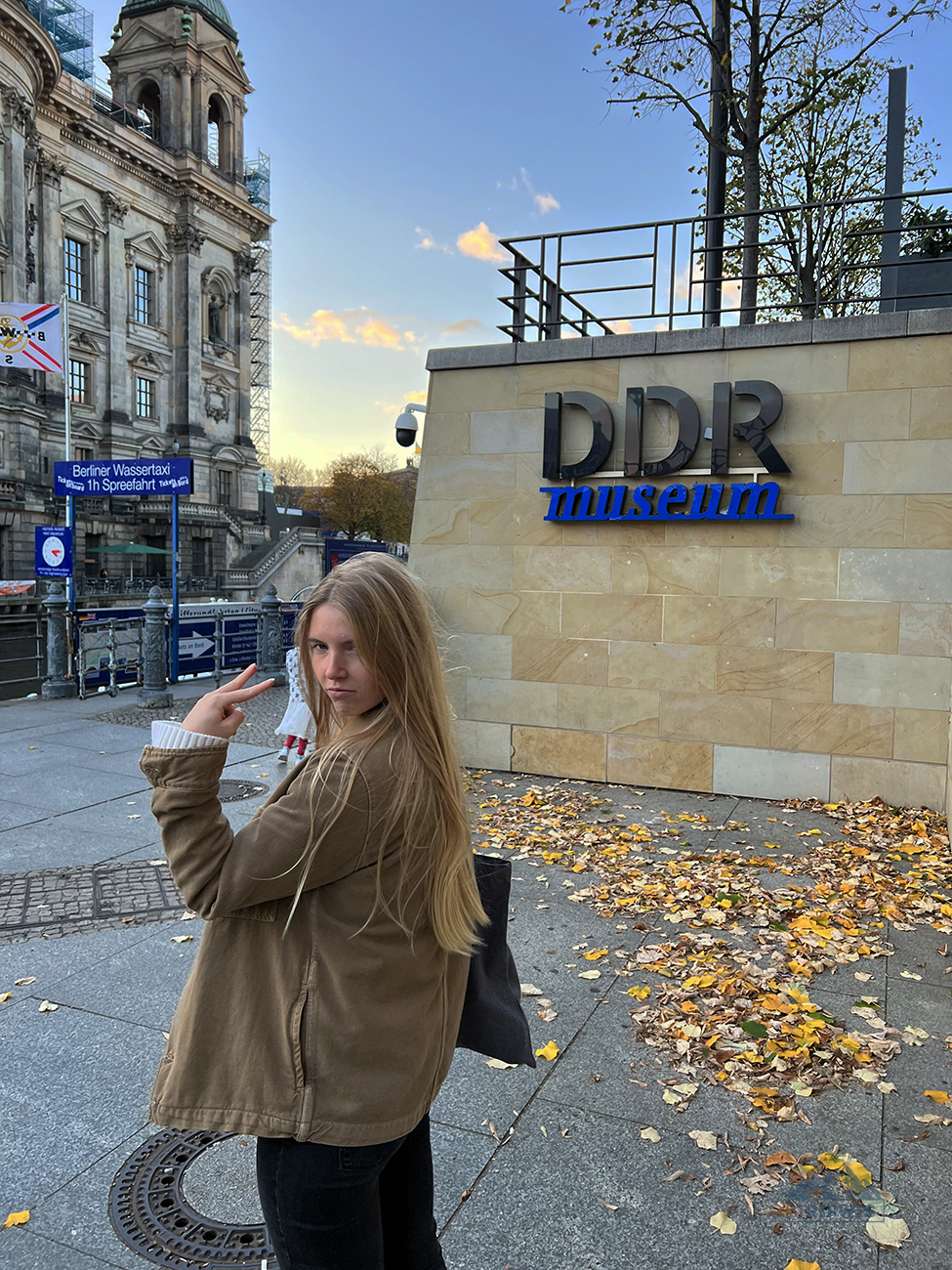 |
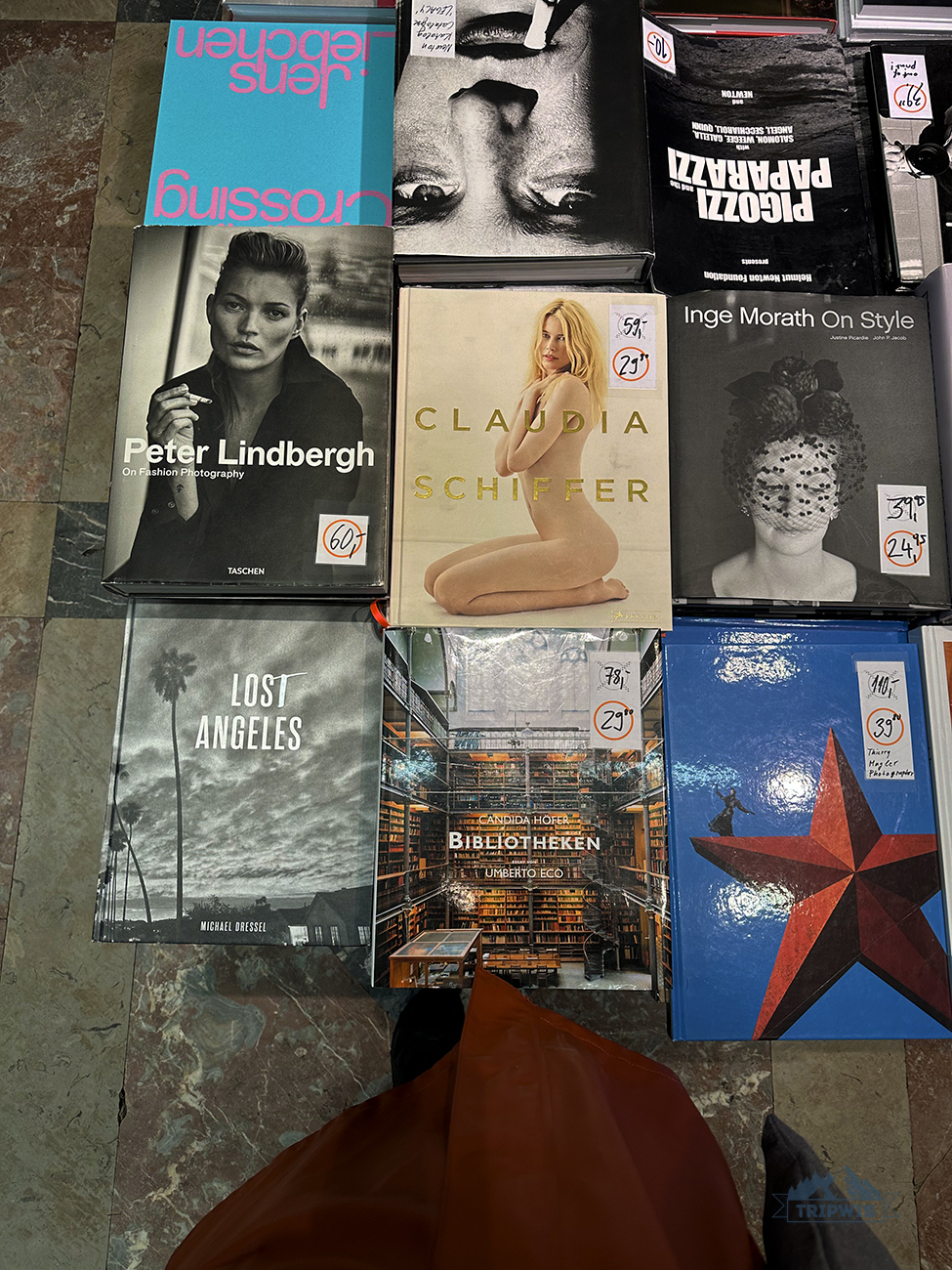 |
Why come here? If you’ve ever wondered what life was like in East Germany or if you feel nostalgic about that time — this Berlin museum is for you. Here, you’ll learn both the intricacies of the politics of GDR and the social and everyday life of its citizens.
You’ll also get a chance to drive the streets of East Berlin in a popular car of that time, walk around a typical kindergarten and type down your impressions of the museum on an actual typewriter from the 70s. We found DDR Museum to be a perfect spot for both kids and their parents. A great advantage of the place is that it’s open on Mondays!
Must-see exhibits:
- Trabant 601 ride is definitely a hit. Trabant used to be a widely produced car in East Germany. In this museum, you can actually drive it through the streets of the city — thanks to the driving simulation.
- The GDR living room is a perfect recreation of the 70s household. Besides a cool interior, there are a lot of interactive attributes of that time here — you can use a phone, a typewriter, or virtually try out some of the 70s outfits. It’s a real journey in time.
💶Entrance fee: Adult — €13.5, students — €8, children younger than 6 — free.
🕔Opening hours: DDR Museum is open daily, 9 a.m. – 9 p.m.
The Stasi Museum
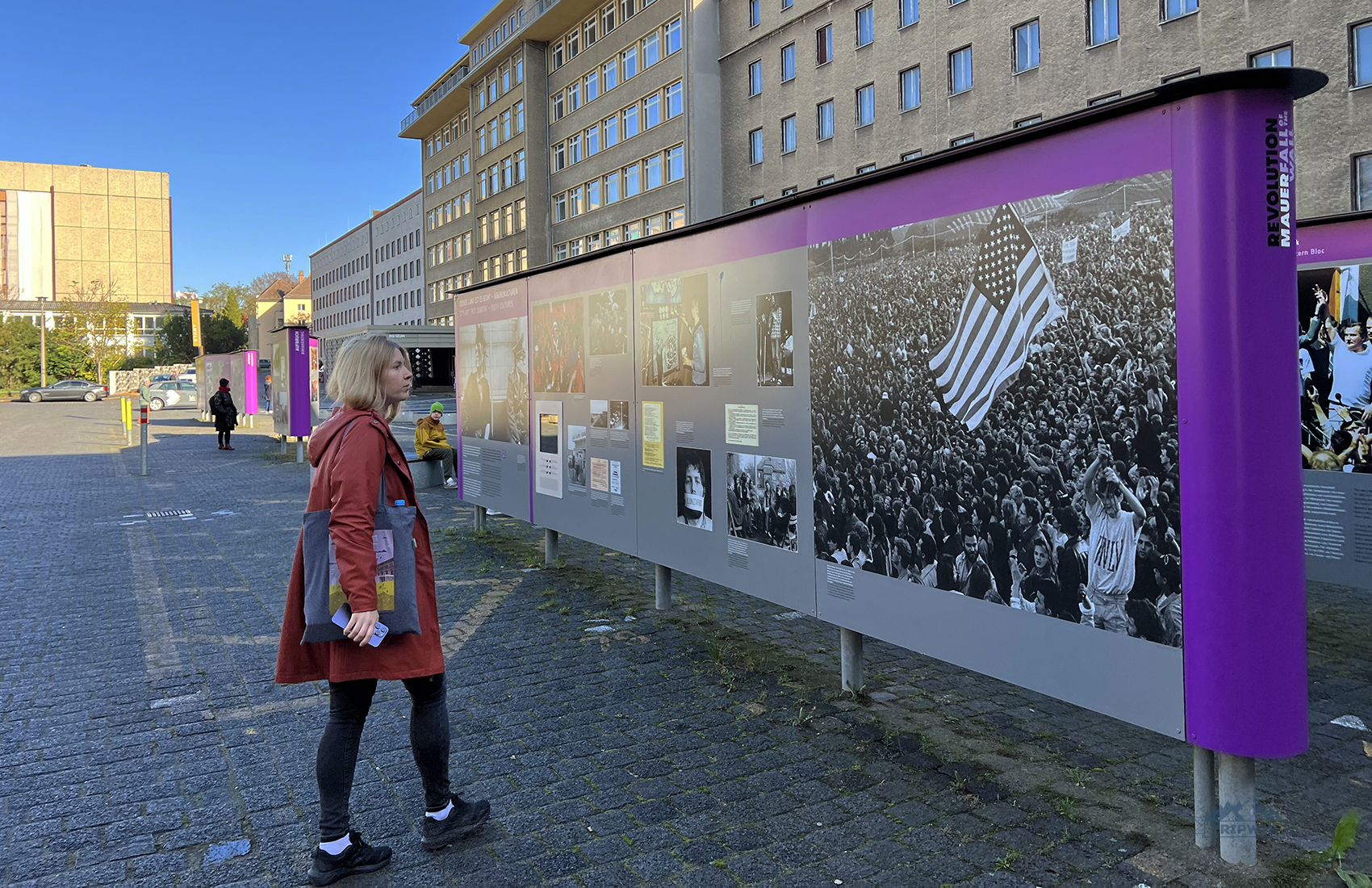
Why come here? Stasi is the name for East Germany’s brutal secret police whose job was to spy and survey the life of East German citizens. Their headquarters were located on the east side of the German capital. Now that very building is the Stasi Museum.
Visiting this place is a controversial experience — you are astonished by learning about all the clever or mad spy methods and at the same time traumatized by the amount of suffering those methods brought upon ordinary people.

Must-see exhibits:
- The Perpetrators — through the photos of the regime’s most notorious employees, you’ll be surprised to see what sorts of people became informants for the secret police and what methods they used to spy on their comrades.
- Mielke’s office — Erich Mielke was the Minister for State Security who lived and worked from the Stasi building. The museum left his office intact, so you can freely peek into the life of this vicious man.
💶Entrance fee: Adult — €10, students — €7.5, children younger than 11 — free.
🕔Opening hours: The Stasi Museum is open Mon – Fri: 10 a.m. – 6 p.m; Sat, Sun: 11 a.m. – 6 p.m.
New museums in Berlin
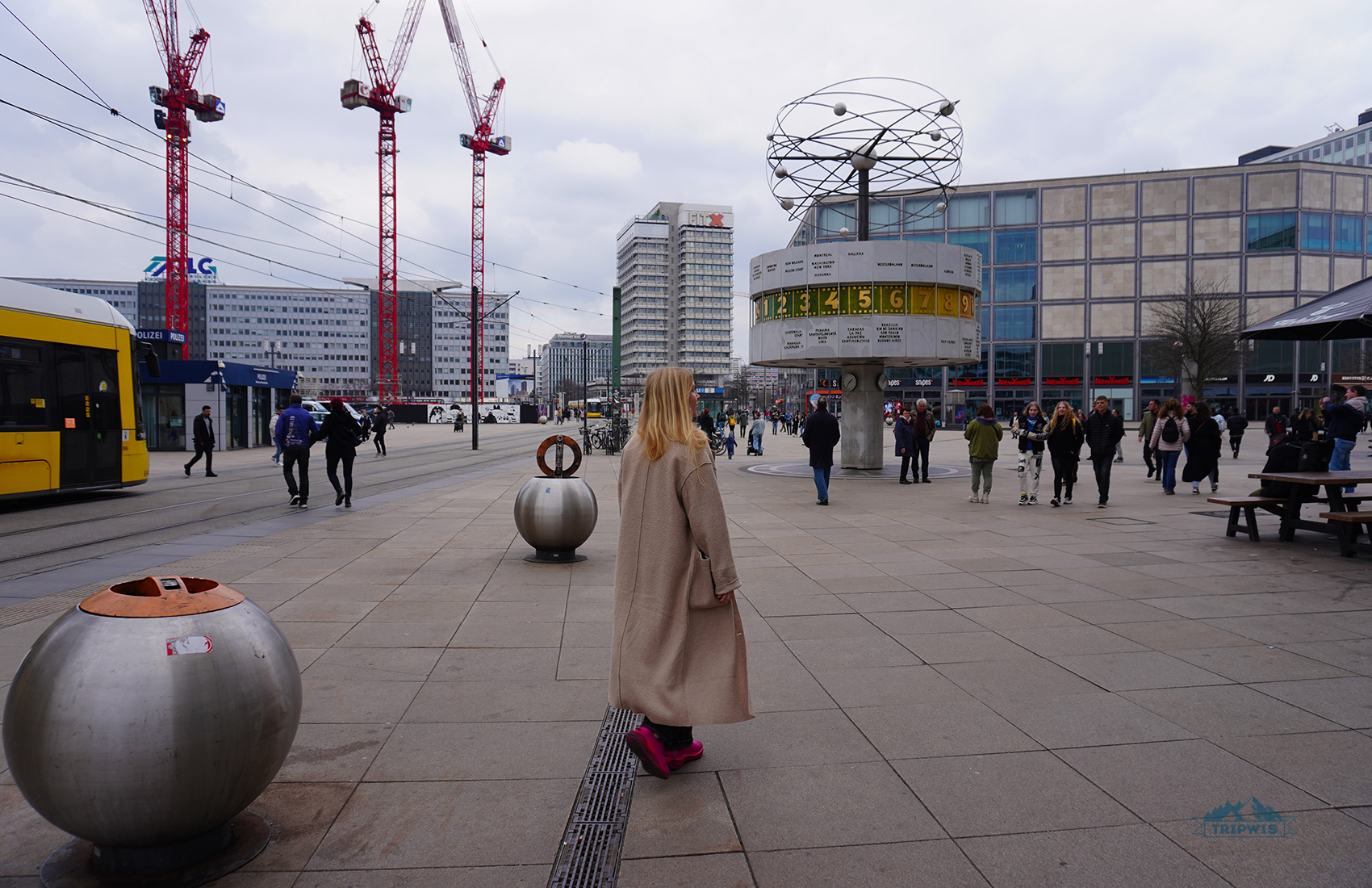
The last few years have seen lots of amazing museums in Berlin closing their doors for renovations and general upkeep… Thankfully, the city never stops expanding and evolving, — there have been even more museums popping up, finding their niche and attracting new visitors with exciting exhibitions during the first part of the 2020s (some of the older ones have also been getting second wind in their sails).
Here are a few that we feel are worth a visit:
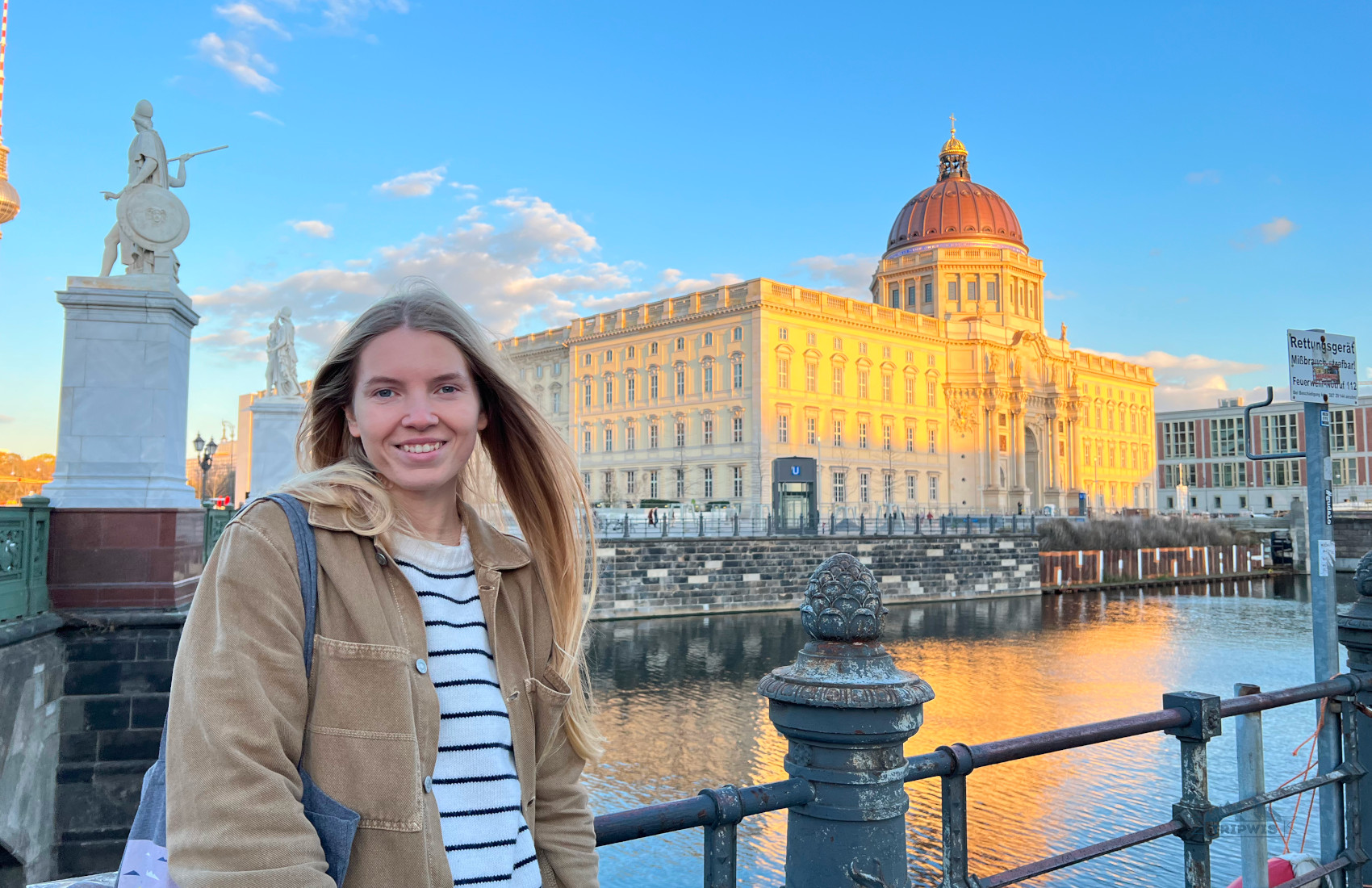
- The Humboldt Forum — an architectural marvel that houses both the Ethnological Museum and Museum of Asian Art, among other things.
It’s probably one of the most controversial museums in the city. It was opened in 2020 but replenished its collection in 2022. Most of the artifacts were forcibly taken from their places of origin during German colonial expansion (while the Brits definitely take the reigns in their looting escapades, the Germans, in this case, are not that far behind) — which is the core of the polemics happening around the museum. There is no better way to form an opinion of your own than by visiting the Forum and seeing it with your own eyes.
💶Entrance fee: Many exhibitions and events at the Humboldt Forum are free of charge; entry to Berlin Global is €7 for adults; you can access the roof terrace for €3.
🕔Opening hours: Exhibitions are usually closed on Tuesdays; open Wed – Mon: 10:30 a.m. – 6:30 p.m.; evening events starts at 7 p.m., — check the program before going.

- Berlinische Galerie — this museum of modern art has relatively recently found its new home in a former warehouse in Kreuzberg (though not in the last five years, but we still consider it to be a new addition to the Berlin’s museum scene).
The new location is spacious and industrial in style, which makes it perfect for exhibitions of contemporary art. The museum is interdisciplinary and has a curious collection of paintings, architecture, and photography.
💶Entrance fee: Adult ticket is €10; students can enter for €6. Children and teens under 18 can visit free of charge.
🕔Opening hours: Museum is closed on Tuesdays; open Wed – Mon: 10 a.m. – 6 p.m.
- Boros Collection — another museum of contemporary art with art pieces from all over the world dating from 1990 to the present times.
Some of the masterpieces (like the ones by Olafur Eliasson) are already considered to be classics, others are less world-acclaimed but still worth seeing. Another thing that makes this museum a worthy destination is the building — it used to be a concrete World War II bunker.
💶Entrance fee: You can enter the collection by appointment, with a regular or a private tour. Regular tour costs €18 per adult and €10 per student. Children younger than 6 are discouraged from seeing the exhibits, but accommodations can be made otherwise.
- Fotografiska — a Swedish photography museum that has branches in New York, Tallinn, and Stockholm finally came to Berlin.
Fotografiska is famous for providing a unique museum experience by combining world-leading photography with an elevated dining scene and eclectic programming. The Berlin location just opened in 2023. This museum is nothing you could have ever imagined — mind-blowing experiences all around!
💶Entrance fee: General admission varies throughout the week (Mon – Thu: €14; Fri – Sun: €16); reduced admission (students, the elderly, the unemployed) is €10. Children can enter for free.
🕔Opening hours: Fotografiska is open daily, 10 a.m. – 11 p.m.
- Deutschlandmuseum — a space so unique it’s hard to pinpoint its exact vibe: Imagine if an adventure park and a museum had a baby!
During your visit here, you will get to witness over 2,000 years of German history through interactive exhibits and a true 4D experience. The museum just opened in 2023, but has since proved itself to be a fun destination for travelers with children.
💶Entrance fee: Tickets are time-slotted and vary in price: Adults will pay anywhere from €11 to €21.50; students — €8 – €15.50. Children under 6 enter for free.
🕔Opening hours: Deutschlandmuseum is open daily, 10 a.m. – 8 p.m.
- Charité Medical History Museum — reopened in 2023 after a major renovation, Berlin Museum of Medical History of the Charité is a completely different type of a museum.
No, let me rephrase that: It requires a unique type of visitor, the one interested in all things medicine and human body. The museum’s permanent exhibit overlooks the advancements made in over 300 years of medical history, with sections of wet and dry specimen, ophthalmology and dental equipment, life-like moulages, and medicine-related manuscripts. Temporary exhibits are a bit more creative: Right now, the current one focuses on the topic of inventing manias through the lens of zeppelin euphoria (yup, an aircraft). The events that take place here vary a lot, but we’re sure that occasional forensic medicine lectures will delight true crime afficionados!
💶Entrance fee: Adult ticket is €10, students can buy a reduced ticket for €5.
🕔Opening hours: Medical History Museum is closed on Mondays, open on Tue, Thu, Fri, Sun: 10 a.m. – 5 p.m., Wed, Sat: 10 a.m. – 7 p.m.
Museum Pass Berlin
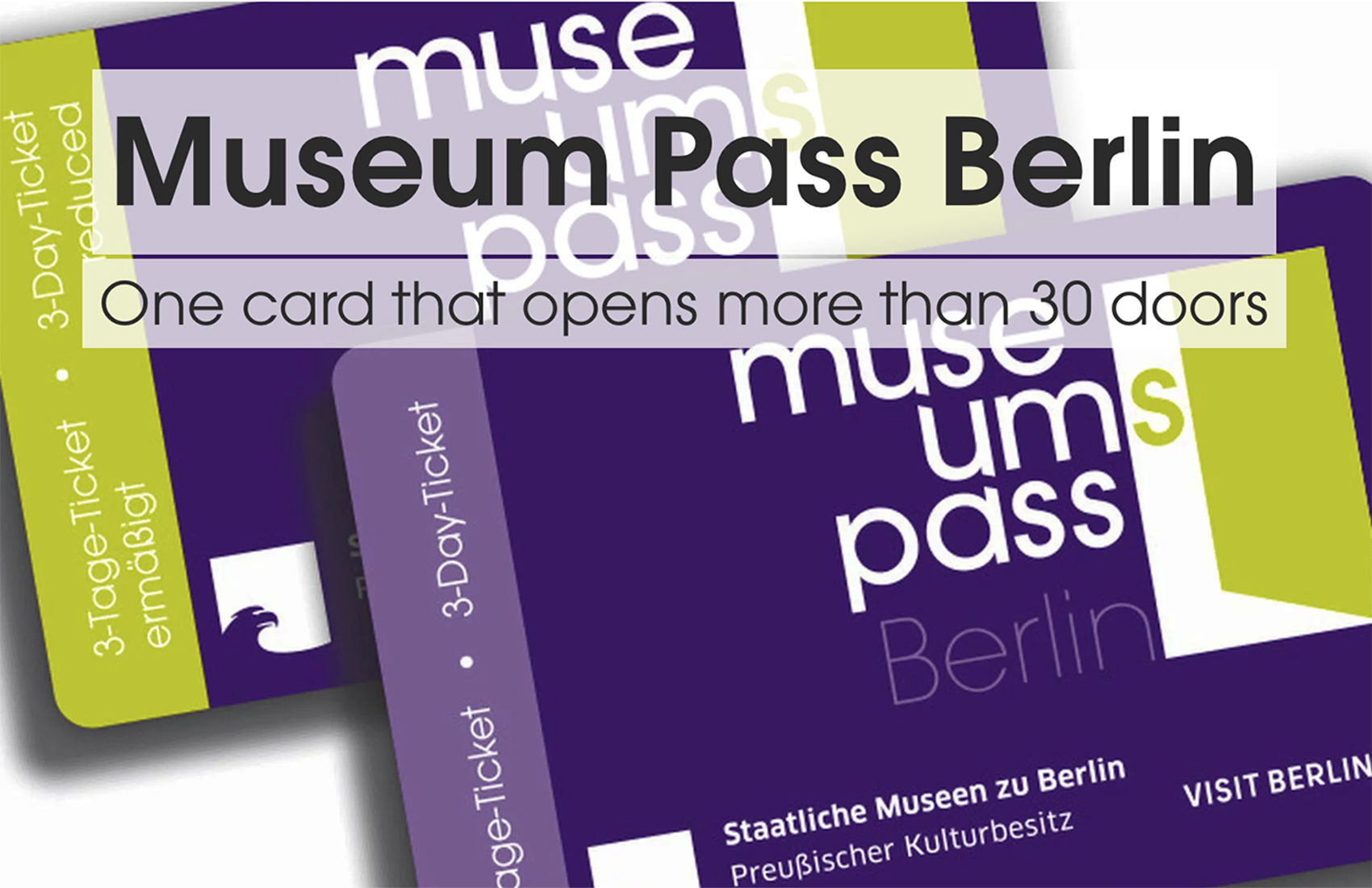
If visiting museums is one of the ways you prefer to discover the city and its culture, then buying a Museum Pass Berlin is the right move for you. This pass gives you the opportunity to see top exhibitions throughout Berlin’s most notable museums (more than 30 of them, in fact) for a humble price of €32 per adult (reduced tickets for students and pupils starts at €16 per person)! Note that the majority of museums offer free admission to those under 18 years of age; though this fact isn’t applied to all of Berlin’s museums, so check the official websites before making the trek.
Museum Pass Berlin is valid for three consecutive days: Not 72 hours in the sense that your time starts when you first use the pass, but more like on the morning of the date the pass is bought for. Still, that gives you enough time to wander around Museum Island, get really emotional at the Jewish Museum, and see the giant T-Rex at the Museum of Natural History.
A little bit of math: As mentioned, the pass costs €32. This is a real bargain, let us tell you! €32 is almost the same amount of money you’ll spend buying tickets to the three separate museum exhibits on the Museum Island! Because of this fact alone, we feel that the Museum Pass Berlin is worth the investment, especially if you plan on popping into more than three museums over the course of three days (which, let’s face it, you absolutely should).
- Most travelers try to compare Museum Pass Berlin and Berlin Welcome Card. While the latter does ease your concerns when it comes to getting around Berlin, it’s not as great if your sole purpose for coming to the city is seeing as many exhibits as possible.
Note that there is an option of Berlin Welcome Card that does offer free admission to the museums on the Museum Island (it starts at €54, twice as much as the price of the classic Berlin Welcome Card that usually goes for €26), as well as plenty of discounts to other notable places of interest throughout the city. Still, if museums are your kryptonite for this particular trip, your best bet is to get the Museum Pass Berlin.
Final thoughts
Now that you’re familiar with Berlin’s museum groove (it’s not all coffeeshops and clubs!), we’re sure that you will be able to plan your cultural city outings with more ease for your next trip here. Trust us, even if you’re not that big on museums in general, try and visit a few in Berlin: Maybe it’s the city’s complicated past, or the ambitious future, — but the material and its meaning that is provided in every one of them is guaranteed to shake you to your very core.
The rich museum culture in Berlin is constantly changing and evolving, so if you want us to include a particularly interesting one to share with the rest of the readers, feel free to leave your experience in the comments down below. Any questions you might have when planning your museum pilgrimage to Berlin will also be answered there!
